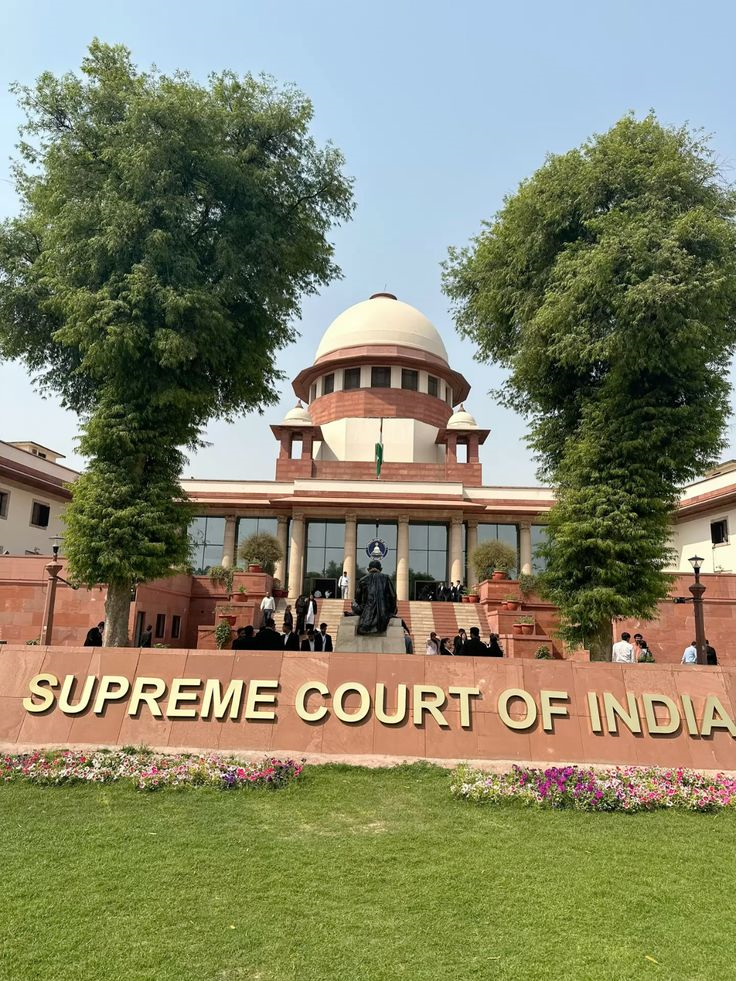Genesis and Background
The Doctrine of Basic Structure is a landmark principle in Indian constitutional law, formulated by the Supreme Court of India in the historic Kesavananda Bharati v. State of Kerala (1973) case. This doctrine emerged as a judicial response to challenges against the amendment powers of the Parliament under Article 368. During the 1960s and 1970s, Parliament had passed multiple constitutional amendments, some of which were challenged as infringing on fundamental rights. The key question before the Supreme Court was: “Does Parliament have unlimited power to amend the Constitution, including its fundamental features?”
In the Kesavananda Bharati case, the Supreme Court ruled that while Parliament has the power to amend the Constitution, this power is not absolute. The Court held that Parliament cannot alter or destroy the ‘basic structure’ of the Constitution, even through constitutional amendments. This doctrine ensures that the core principles and identity of the Constitution remain intact, protecting India’s democratic, federal, and secular character.
Scope of the Doctrine
The scope of the Basic Structure doctrine encompasses several essential features that form the foundation of the Indian Constitution. While the Supreme Court did not provide an exhaustive list, subsequent judgments have identified several key elements, including:
- Supremacy of the Constitution: The Constitution remains the ultimate legal authority, and all laws and amendments must conform to its core principles.
- Rule of Law: Parliament cannot make amendments that violate the principle that everyone, including the state, is subject to the law.
- Separation of Powers: Legislative, executive, and judicial powers are distinct, and no amendment can disrupt this balance.
- Federalism: The federal structure, including the division of powers between the Union and the States, is protected.
- Secularism: The secular character of the Indian state is inviolable.
- Democracy and Free Elections: Democratic governance and periodic free elections must be preserved.
- Judicial Review: The power of the judiciary to review legislative or executive actions for constitutionality is a core feature.
Through these principles, the doctrine sets constitutional limits on Parliament’s amending power, ensuring that amendments do not destroy the identity, philosophy, or essence of the Constitution.
Judicial Interpretation and Evolution
Since Kesavananda Bharati, the Supreme Court has expanded and refined the doctrine. For instance:
- Indira Gandhi v. Raj Narain (1975): The Court reaffirmed that constitutional amendments cannot violate the basic structure, particularly the principle of free and fair elections.
- Minerva Mills v. Union of India (1980): This judgment emphasized that Parliament cannot use Article 368 to destroy fundamental rights or tilt the Constitution excessively in favor of one organ of government.
- I.R. Coelho v. State of Tamil Nadu (2007): The Court extended the doctrine to validate that laws placed under the Ninth Schedule of the Constitution could still be reviewed if they violated the basic structure.
Through these judgments, the doctrine has become dynamic, capable of protecting fundamental constitutional principles even against amendments meant to bypass judicial scrutiny.
Significance in Indian Constitutional Law
The doctrine of Basic Structure serves several critical functions:
- Safeguarding Fundamental Rights: By restricting Parliament from destroying core rights, the doctrine ensures that citizens’ freedoms remain protected.
- Maintaining Federal Balance: It preserves the division of powers and autonomy of States within the federal framework.
- Protecting Democratic Governance: Free and fair elections, rule of law, and judicial review are preserved as cornerstones of India’s democracy.
- Judicial Accountability and Constitutional Supremacy: Courts act as guardians of the Constitution, preventing misuse of legislative power.
In effect, the doctrine ensures that India’s Constitution remains living and flexible, yet its fundamental character is perpetually safeguarded, balancing legislative authority with constitutional morality.
Practical Implications and Contemporary Relevance
The doctrine of Basic Structure has far-reaching implications in contemporary Indian politics and governance. It acts as a check against arbitrary amendments, protecting institutions and citizens alike. For example, attempts to bypass judicial review or curtail federalism are regularly scrutinized under this doctrine. By maintaining the delicate balance between Parliament’s amendment powers and the inviolability of core constitutional principles, it strengthens the rule of law and constitutional democracy.
Further, the doctrine has been pivotal in disputes over controversial amendments, especially in politically sensitive matters. Courts have consistently reinforced that even a constitutional amendment cannot destroy the Constitution’s identity, preserving the spirit and vision of the framers.
Mnemonic to Remember the Scope of Basic Structure
Use the mnemonic: “S-F-R-D-S-J”
S – Supremacy of Constitution
F – Fundamental Rights protected
R – Rule of Law
D – Democracy and Free Elections
S – Separation of Powers
J – Judicial Review
This helps in quickly recalling the essential components of the Basic Structure doctrine.
About lawgnan
Explore the Doctrine of Basic Structure in Indian Constitutional Law, a principle that limits Parliament’s power to amend the Constitution under Article 368. Learn how landmark cases like Kesavananda Bharati v. State of Kerala, Minerva Mills v. Union of India, and I.R. Coelho v. State of Tamil Nadu shaped India’s constitutional identity. Understand its role in preserving democracy, federalism, and judicial review. Ideal for UPSC, CLAT, and law students. Visit Lawgnan.in to strengthen your understanding of constitutional principles that protect India’s democracy and ensure constitutional supremacy.




